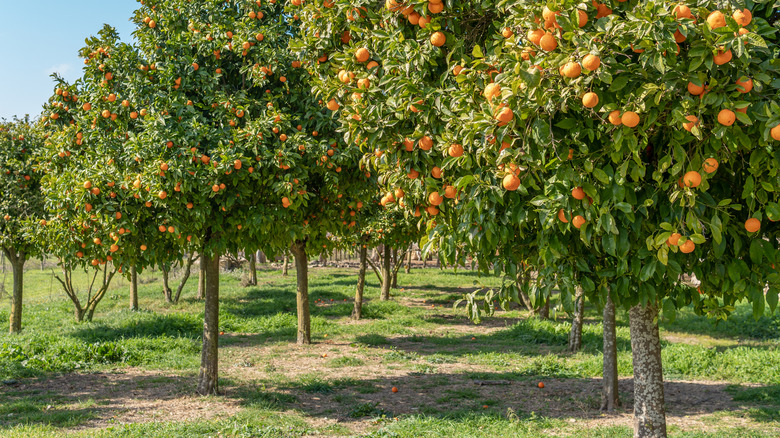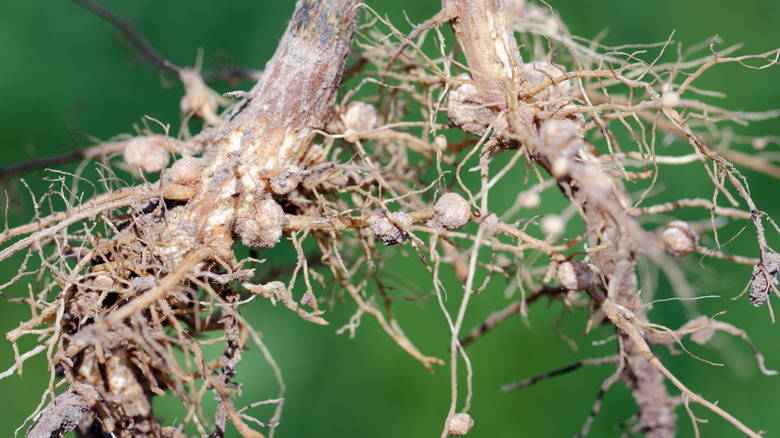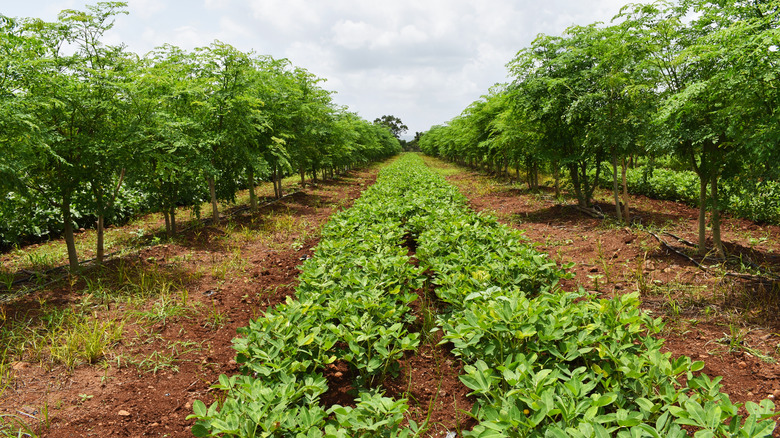The Companion Vegetables That'll Keep Your Citrus Tree's Soil In Tip-Top Shape
Citrus trees are a long-term investment that will require patience and effort, but the payoff of homegrown fruit will make it worth it. You'll need to fertilize your tree each year to promote healthy growth, resulting in delicious fruit, even if your tree isn't at a fruit-bearing stage yet. Since fertilizing is so important, you should take every opportunity to enhance your soil. Companion planting legumes with citrus trees will help your efforts tremendously since legumes add nitrogen to the soil.
Many people assume planting legumes will give you an immediate supply of nitrogen, but that's not the case. Legumes will need to be allowed to grow next to your citrus for at least a few months for them to bring any benefits. Peas and alfalfa are great options because of their high nitrogen concentration, but any plant in the legume family, including beans and clover, will supply nitrogen to the soil, especially when you return the plants to the soil. When choosing a legume to grow, consider how much shade your tree will cast, as most legumes need full sun exposure to thrive.
Legumes create nitrogen
Legumes fix nitrogen in the soil by removing it from the air and converting it into something plants can use. These plants store nitrogen in root nodules, which are bumps on the roots. If legume plants don't have nodules, they have yet to create usable nitrogen for your citrus tree. It can take up to six weeks for the first nodules to appear. Note that most studies about the nitrogen fixation process are based on plants that have been growing for at least one year; very little information is available about how useful seedlings are, so if you want to plant legumes for nitrogen purposes, plan on keeping them in the ground for a while.
Alfalfa is one of the best plants to choose because of how much nitrogen it produces, but peas, beans, clover, hairy vetch, and others can still help out your garden, though you may need to plant more to see the effects. Your plants need to be happy and healthy to produce nitrogen. If they lack sunlight, water, or nutrients, they will struggle to survive and can't create nitrogen. When you plant legumes, the young seedlings will take nitrogen from the soil until they start to produce it themselves. Consider this when you fertilize your citrus tree; you might have to add a little extra nitrogen to account for the hungry plants so your tree doesn't miss out.
How to fertilize your citrus tree with legumes
Since legumes also need nitrogen to grow, they'll use most of what they convert. However, if they convert too much, it will leach into the soil, which your citrus tree can then use. For your tree to benefit from leached nitrogen, plant legumes underneath or slightly away from the tree so its feeder roots can reach out and access them. Legumes need at least eight hours of sunlight to thrive, so planting underneath a large tree isn't ideal, but you can certainly do so if you don't want to harvest the beans, peas, or greens they produce. Plant them in the vicinity of the tree in a circle in the ground. Using a bottomless raised bed may be ineffective, depending on how tall it is, since it will make the legumes grow further away from the tree roots.
Though the legumes will leach nitrogen, they're most effective when the entire plant is tilled into the soil. After your plants have grown, whether just until the seedling stage or until after you harvest the produce, use a hoe to till the plants into the ground. This will act as a green manure that will be nitrogen-rich for your citrus tree and will continue improving the soil over time. If you want to plant more legumes, more nitrogen will be available for them to take.


